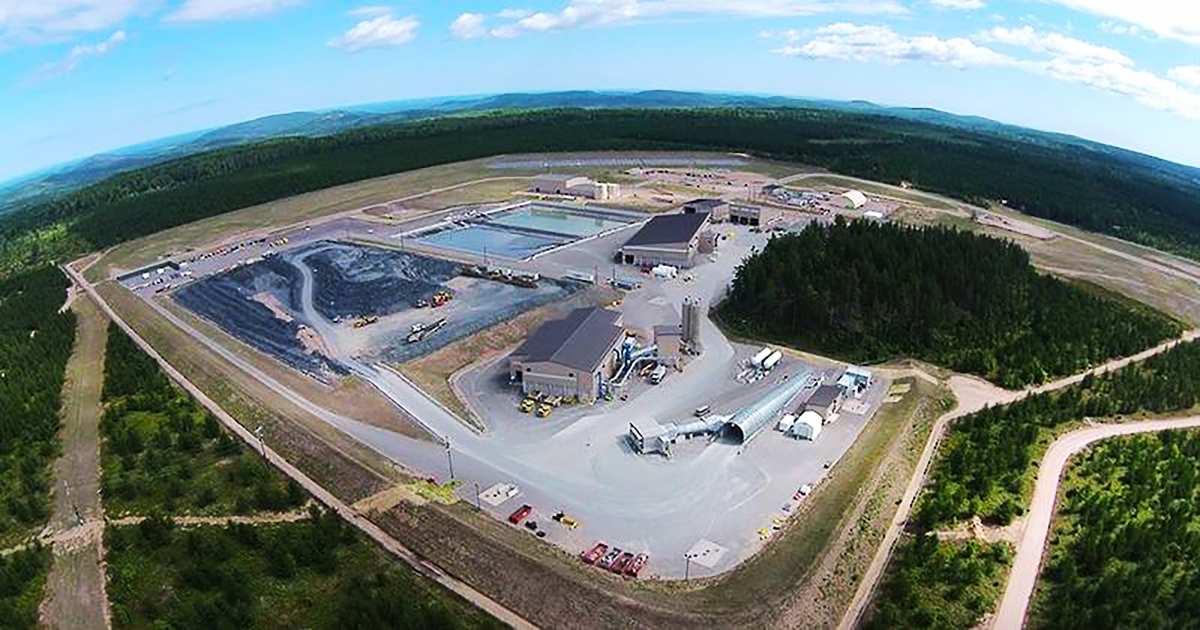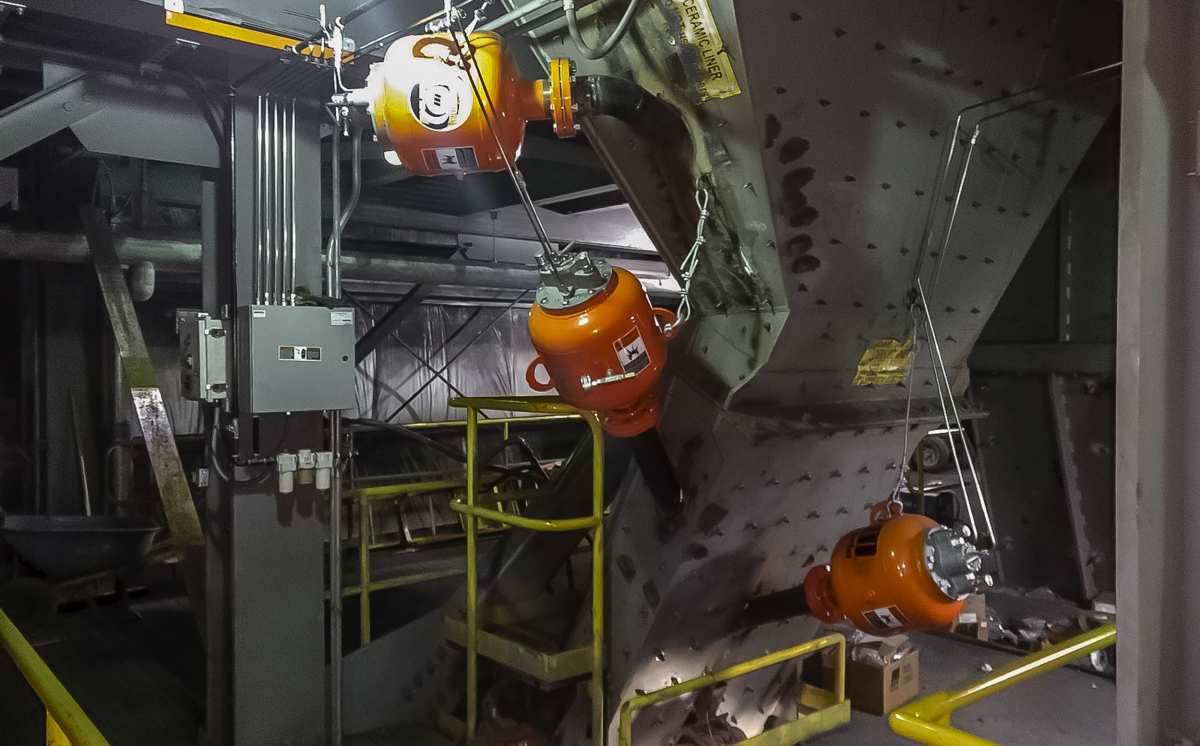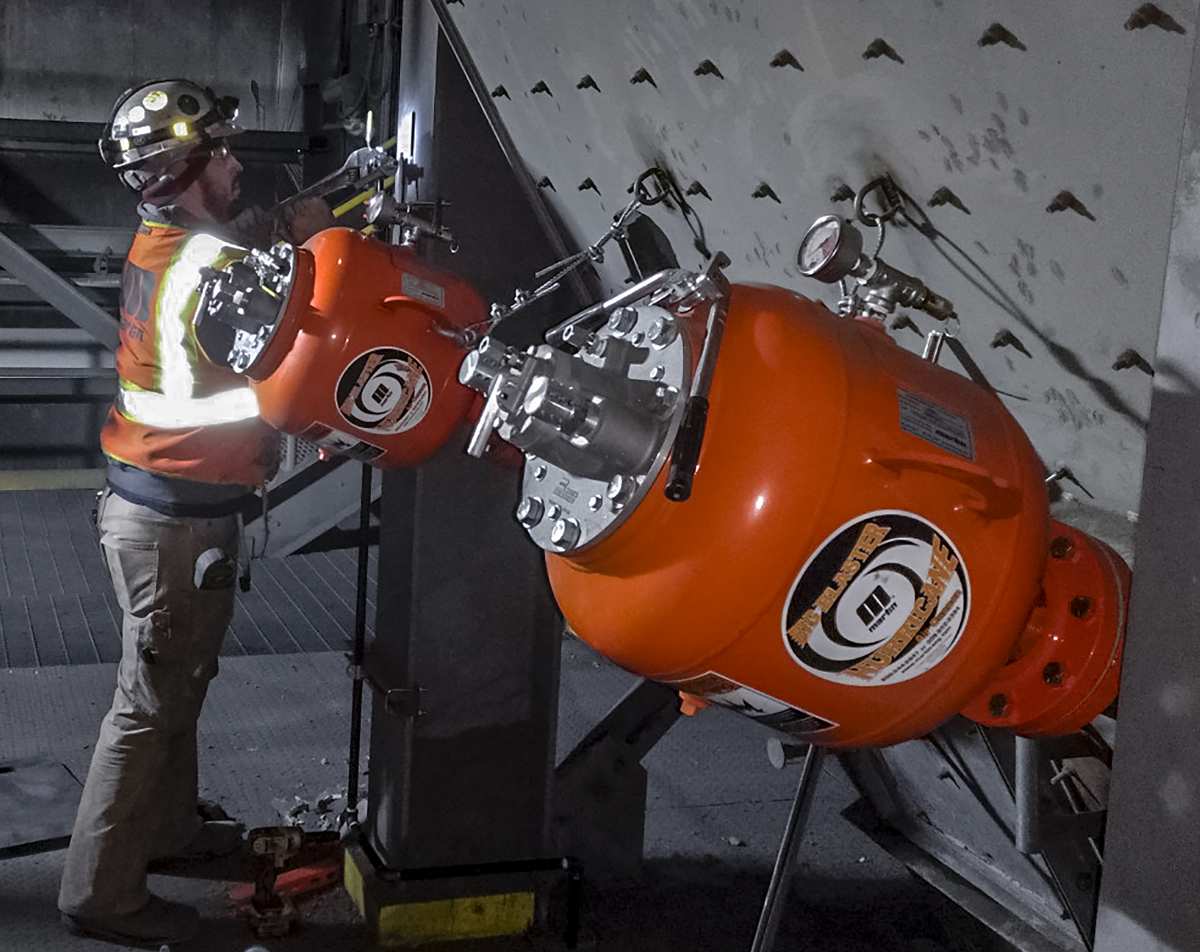| Products Used | Hurricane Air Cannon |
|---|---|
| Product Types Used | Air Cannon Solutions , Air Cannons |
| Industry | Mining |
| Customer | Eagle Mine |
PROBLEM
Eagle Mine is the only primary nickel mine in the United States, producing 1.5% of the world’s total nickel production. The company extracts approximately 2,200 st/pd (2,000 mt/pd) from the underground nickel-copper mine using a bench-and-fill stoping process. Clogging issues were affecting an undersized chute in the Humbolt milling process, which would stop the entire crushing process approximately 3-4 times per shift for as long as an hour, blocking input of material all the way back to the ore storage area. The breaks in production and ensuing downtime had an immediate effect on the cost of operation. Manual attempts to control the problem were ineffective, and air lancing consumed excessive amounts of compressed air.

SOLUTION
A low-friction chute liner and vibrators delivered some improvement, but Lead Reliability Technician Ted Lakomowski asked Martin Engineering to examine the issue and offer a safe, effective and affordable solution. Territory Manager Jason Haynes proposed installing air cannons at strategic points throughout the chute, but mine managers had some initial reservations about compressed air consumption, based on their experience with older, inefficient designs. After Haynes detailed the low impact that new air cannon technology has on compressed air systems, Lakomowski advocated for the initial installation of seven 35 Liter (9.25 gallon) Martin® Hurricane Air Cannons.

RESULT
Operating on a regular firing schedule of every 1-10 minutes (adjusted for production volume, time of year and moisture level), the seven cannon configuration reduced clogging issues and downtime. This significantly lowered the risk to operators and reduced the cost of operation. “When I did the cost assessment, I was surprised to discover that there was a 1000 percent savings in using the air cannons over the air lances,” Lakomowski said. “It’s a significantly lower effect on our system than initially predicted, and managers are very happy about that. From a safety aspect alone, this solution has paid for itself,” he concluded.
